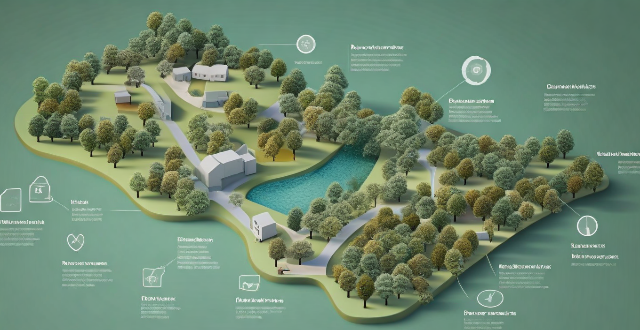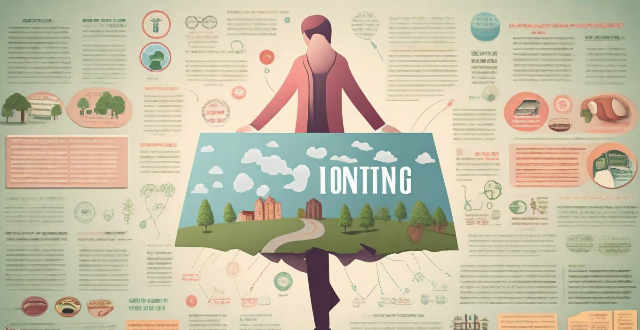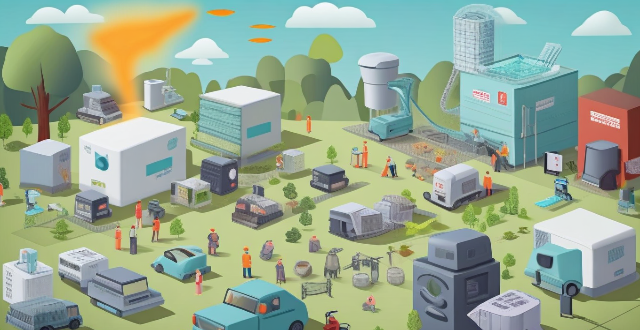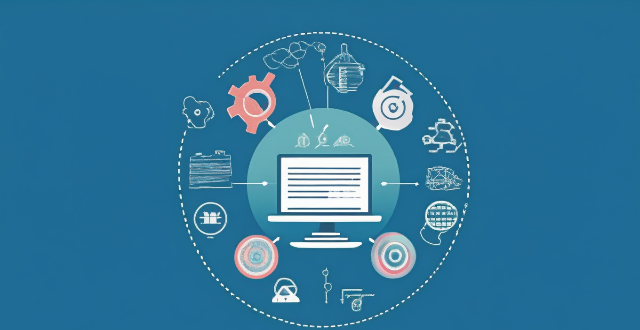Pollution Monitoring

How often should air quality monitoring be conducted ?
Air quality monitoring is crucial for ensuring safe and healthy air, with the frequency of such monitoring influenced by various factors. Urban areas typically require daily monitoring due to high pollution levels, while rural areas may only need weekly or monthly checks. Special situations, like emergencies or natural disasters, might necessitate continuous monitoring. The goal is to balance between tracking long-term trends and identifying short-term spikes in pollution, all while considering available resources.

What is air quality monitoring and why is it important ?
Air quality monitoring is crucial for public health, environmental protection, and socio-economic decision making. It involves measuring pollutants like particulate matter, nitrogen dioxide, sulfur dioxide, carbon monoxide, and ozone to assess their impact on human health, the environment, and society. Poor air quality can cause respiratory diseases, cardiovascular problems, nervous system disorders, developmental issues in children, and increase cancer risks. It also contributes to acid rain, ozone depletion, habitat destruction, and global warming. Socio-economically, poor air quality leads to increased healthcare costs, lost work days, reduced tourism, and lower property values. Air quality monitoring data helps individuals make informed decisions, governments create regulations, and influence public policy.

How does climate change affect the priorities in environmental monitoring ?
Climate change significantly impacts the priorities in environmental monitoring by necessitating a focus on rising sea levels, extreme weather events, changes in biodiversity, impacts on agriculture and food security, and air quality issues. Addressing these challenges requires a comprehensive approach that incorporates regular monitoring, early warning systems, adaptation strategies, and effective conservation planning.

How can governments implement policies to reduce plastic waste and pollution ?
Governments can implement policies to reduce plastic waste and pollution by banning single-use plastics, promoting recycling and composting programs, encouraging sustainable packaging practices, educating the public about plastic pollution, and collaborating with other countries and international organizations.

What impact does air pollution have on indoor sports facilities and athletes' health ?
Impact of Air Pollution on Indoor Sports Facilities and Athletes' Health: - **On Indoor Sports Facilities**: - Reduced visibility, unpleasant odors and tastes, equipment damage, and increased energy consumption due to air pollutants. - **On Athletes' Health**: - Respiratory problems, cardiovascular disease, asthma attacks, skin irritation, fatigue and lethargy, cognitive impairment, and immune system suppression due to exposure to air pollutants.

What are some innovative solutions for controlling plastic pollution in developing countries ?
The text discusses innovative solutions for controlling plastic pollution in developing countries, including promoting recycling and waste management, encouraging alternative packaging materials, educating the public on plastic pollution, implementing bans on single-use plastics, and investing in research and development.

How does plastic pollution impact marine life and ecosystems ?
The text discusses the impact of plastic pollution on marine life and ecosystems, including entanglement and ingestion by animals, chemical pollution from toxic additives, habitat destruction, food chain disruption, economic impacts on tourism and fishing industries, aesthetic and cultural impacts on coastlines and ocean environments, and solutions and mitigation efforts such as reducing plastic use, improving waste management, cleanup campaigns, education and awareness, policy changes, and research and innovation.

What are the different types of sensors used in environmental monitoring ?
Environmental monitoring involves the use of various sensors to collect data on different environmental parameters. These sensors include temperature sensors, humidity sensors, pressure sensors, light sensors, and chemical sensors. Temperature sensors measure the temperature of the environment and are crucial for monitoring weather patterns, climate change, and the impact of human activities on the environment. Humidity sensors measure the moisture content in the air and are essential for monitoring weather patterns, air quality, and the impact of human activities on the environment. Pressure sensors measure the force per unit area exerted by a fluid or gas and are crucial for monitoring weather patterns, air quality, and the impact of human activities on the environment. Light sensors measure the intensity and wavelength of light in the environment and are essential for monitoring solar radiation, atmospheric conditions, and the impact of human activities on the environment. Chemical sensors measure the presence and concentration of specific chemicals in the environment and are crucial for monitoring air and water quality, soil contamination, and the impact of human activities on the environment. Overall, these sensors help us understand the state of our environment and take necessary actions to protect it.

What are the main challenges faced in implementing effective environmental monitoring programs ?
Main challenges faced in implementing effective environmental monitoring programs include limited funding, technological barriers, data management issues, legal and regulatory compliance hurdles, lack of public awareness and engagement, the unpredictability of natural variability, and difficulties in accessing remote or politically sensitive monitoring sites. Addressing these challenges through strategic planning, collaboration, and investment in technology and training can enhance the effectiveness of such programs.

Do hybrid cars produce less pollution than traditional gasoline cars ?
Hybrid cars generally produce less pollution than traditional gasoline cars, but the comparison is not straightforward and various factors must be taken into account.

How do clean production technologies help reduce waste and pollution ?
Clean production technologies are vital in reducing waste and pollution. They achieve this through energy efficiency, resource efficiency, improved waste management, pollution control, and a holistic approach to sustainability via life cycle assessment. By implementing these technologies, industries can operate in a more sustainable manner, minimizing their environmental impact.

Can sport monitoring technology help prevent injuries ?
Sport monitoring technology has become increasingly popular in recent years, with many athletes and coaches using it to improve performance and prevent injuries. This technology includes wearable devices such as fitness trackers, heart rate monitors, and GPS tracking systems, as well as more advanced technologies like motion capture systems and force plates. Sport monitoring technology works by collecting data on an athlete's movements, heart rate, and other physiological factors. This data is then analyzed to provide insights into the athlete's performance and identify areas where they may be at risk of injury. By tracking an athlete's movements and physiological factors, sport monitoring technology can identify potential injury risk factors early on, help coaches create personalized training plans for each athlete based on their individual needs and abilities, monitor recovery periods between sessions, and educate athletes and coaches about injury prevention strategies. Overall, there is evidence to suggest that sport monitoring technology can help prevent injuries in several ways. However, it is important to note that no technology can completely eliminate the risk of injury, and proper training, conditioning, and safety measures should always be prioritized.

How does air pollution caused by climate change affect children ?
The provided text discusses the impact of air pollution, exacerbated by climate change, on children's health. It outlines both immediate and long-term health effects, including respiratory issues, developmental concerns, chronic conditions, and potential for other health problems. The text also highlights the socio-economic impact of these health issues, such as school performance and healthcare costs. Prevention and mitigation strategies are suggested, including reducing pollution sources, promoting clean energy, awareness and education, and urban planning. The conclusion emphasizes the need for collective action to protect children's health and future.

What are the long-term effects of air pollution on our health ?
The long-term effects of air pollution on health are wide-ranging and severe, affecting individuals and entire communities. Respiratory diseases, cardiovascular diseases, neurological disorders, reproductive health problems, and other health issues have all been linked to exposure to polluted air. It is essential to address air pollution as a public health issue to protect the health and well-being of people worldwide.

What are the most effective ways to control plastic pollution ?
The text discusses the issue of plastic pollution and its harmful effects on the environment and human health. It provides various methods to control this problem, including reducing plastic use, recycling properly, supporting eco-friendly brands, implementing government policies such as banning single-use plastics, promoting recycling infrastructure, and investing in research and development for sustainable alternatives to plastic. The text emphasizes that controlling plastic pollution requires collective efforts from individuals, businesses, and governments to achieve a cleaner and healthier environment for all living beings on Earth.

What is the role of businesses in controlling plastic pollution ?
Businesses have a crucial role in controlling plastic pollution. They can reduce plastic production by switching to biodegradable materials and improving recycling efficiency. Promoting sustainable practices, such as encouraging consumer responsibility and partnering with environmental organizations, is also essential. Investing in research and development for alternative products and improved recycling technologies further helps control plastic pollution. Businesses that prioritize sustainability will likely see long-term benefits in profitability and reputation.

What are the challenges faced by recycling facilities in controlling plastic pollution ?
Recycling facilities face numerous challenges in controlling plastic pollution, including logistical issues in collection and sorting, technological and economic constraints in processing, environmental concerns, and the need for public education. Addressing these challenges requires collaborative efforts from governments, industries, and individuals committed to reducing plastic pollution through effective recycling strategies.

Can heart rate monitoring help prevent overexertion during exercise ?
Overexertion during exercise can lead to fatigue, muscle soreness, and injuries. Heart rate monitoring is a technique used to measure the number of times a person's heart beats per minute (bpm). By monitoring your heart rate, you can determine personalized training zones based on age, fitness level, and goals, providing real-time feedback on current heart rate during exercise. Recovery time is essential for preventing overexertion, and heart rate monitoring helps determine how long it takes for the body to return to its resting state. Best practices for heart rate monitoring include choosing the right device, calibrating regularly, warming up properly, staying hydrated, and listening to your body. Following these guidelines and listening to your body can help prevent overexertion during exercise while maximizing its benefits.

How does proper waste management aid in saving energy and reducing pollution ?
Proper waste management is crucial for conserving energy and reducing pollution. It involves strategies like composting organic waste to reduce methane emissions, enhancing recycling to save energy in manufacturing new products, preventing environmental pollution through proper disposal, promoting sustainable practices like reduce, reuse, and recycle, and supporting the circular economy model. By adopting these measures, we can move towards a more sustainable future that conserves resources and protects our planet.

How can individuals contribute to reducing plastic pollution in their daily lives ?
Reducing plastic pollution requires individual effort and collective action. Here are key steps to minimize your plastic footprint: 1. **Bring Your Own Reusable Bags**: Avoid single-use plastic bags by carrying reusable shopping bags made from durable materials. 2. **Use Refillable Water Bottles**: Invest in a high-quality, BPA-free refillable water bottle to avoid buying bottled water. 3. **Say No to Single-Use Plastic Utensils**: Carry reusable utensils made from eco-friendly materials like bamboo or stainless steel. 4. **Opt for Bulk Foods**: Choose loose fruits and vegetables over pre-packaged ones and use reusable containers for bulk items. 5. **Choose Products with Less Packaging**: Opt for products with minimal or recyclable packaging and support eco-friendly brands. 6. **Recycle Properly**: Familiarize yourself with local recycling guidelines and ensure items are clean and sorted properly. 7. **Participate in Cleanup Events**: Join community efforts to remove plastic waste from the environment and raise awareness. 8. **Educate Others**: Share knowledge about plastic pollution and encourage others to adopt habits that reduce plastic use. 9. **Support Legislation and Policies**: Advocate for policies that reduce single-use plastics and promote recycling initiatives. By making these changes, individuals can contribute significantly to reducing plastic pollution and protecting the environment.

What is the importance of long-term monitoring and evaluation in climate policy ?
The importance of long-term monitoring and evaluation in climate policy is discussed. Long-term monitoring and evaluation help ensure accountability for climate action, identify gaps and opportunities for improvement, inform future policies, build public trust, and promote sustainable development.

What are the benefits of monitoring heart rate during exercise ?
Monitoring your heart rate during exercise offers numerous benefits, including improved workout efficiency, better recovery, reduced risk of injury, increased motivation, and improved cardiovascular health. By keeping an eye on your heart rate, you can ensure you're getting the most out of every workout while also taking care of your body.

How do sports monitoring systems analyze muscle activity and fatigue ?
Sports monitoring systems analyze muscle activity and fatigue by employing various technologies and methodologies, including: 1. Electromyography (EMG) to measure electrical muscle activity and detect fatigue indicators. 2. Heart rate monitoring to track intensity, recovery, and heart rate variability (HRV). 3. Accelerometry to track motion patterns and assess fatigue through changes in movement quality. 4. Force plates and pressure mats for measuring ground reaction forces and load distribution. 5. Blood lactate testing as a metabolic indicator of anaerobic metabolism and fatigue. 6. Perception-based scales like Ratings of Perceived Exertion (RPE) for subjective feedback on exertion levels. 7. Sleep tracking to monitor sleep duration, quality, and rest disruptions. 8. Environmental monitoring to account for external conditions affecting performance and fatigue. These systems provide valuable insights into an athlete's performance, enabling coaches and athletes to adjust training regimens, prevent overtraining, and enhance overall sports performance.